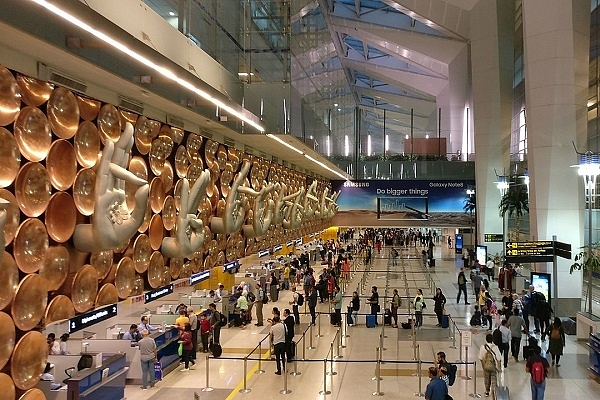News Brief
Here's Why Centre Has Asked To Reduce Proposed Number Of Stations For Air Train At IGI Airport, Delhi To Three

Indira Gandhi International Airport in Delhi. (Representative image)
The central government has instructed Delhi International Airport Ltd (DIAL) to reduce the proposed number of stations for the air train at Indira Gandhi International Airport, to three.
This directive aims to ensure efficient intra-terminal transfers for passengers and enhance security on India's first automated people-mover (APM) at a major hub, according to a report from Times of India.
DIAL's initial plan included six stations along an 8 km route, while the Airports Authority of India (AAI) proposed four stops on a 6 km route.
The government's directive calls for only one stop between T1 and T2/3, with the other two stations being T1 and T2/3 themselves. Aerocity is likely to be the third station.
DIAL's original proposal included additional stations at Aerocity's hotel and office district.
The project, estimated at Rs 3,500 crore, poses funding challenges as the government mandates DIAL to finance it independently. Any development fee on passengers would only be allowed after the project's completion.
DIAL argued that AAI's four-stop proposal lacked significant revenue streams, necessitating a higher recovery of costs through user development fees (UDF).
The additional stations in DIAL's model offered more funding options due to increased footfall, potentially making it more cost-effective for flyers.
Now, with the aviation ministry's directive for three stations, DIAL must devise new models and assess their cost implications for passengers in terms of UDF when the project is operational.
With the expansion of the IGI airport underway, accommodating increasing passenger traffic is crucial.
Terminal 1's capacity will soon reach 4.5 crore passengers annually (CPA), and the combined capacity of T3 and T2 currently stands at 6.4 CPA.
Future plans include replacing T2 with a larger T4 by 2032, increasing the combined capacity of T3 and T4 to 8.9 CPA, and the airport's total capacity to 13.4 CPA. The number of passengers transferring between T1 and T3-T2/4 is expected to rise significantly.
Support Swarajya's 50 Ground Reports Project & Sponsor A Story
Every general election Swarajya does a 50 ground reports project.
Aimed only at serious readers and those who appreciate the nuances of political undercurrents, the project provides a sense of India's electoral landscape. As you know, these reports are produced after considerable investment of travel, time and effort on the ground.
This time too we've kicked off the project in style and have covered over 30 constituencies already. If you're someone who appreciates such work and have enjoyed our coverage please consider sponsoring a ground report for just Rs 2999 to Rs 19,999 - it goes a long way in helping us produce more quality reportage.
You can also back this project by becoming a subscriber for as little as Rs 999 - so do click on this links and choose a plan that suits you and back us.
Click below to contribute.
Latest